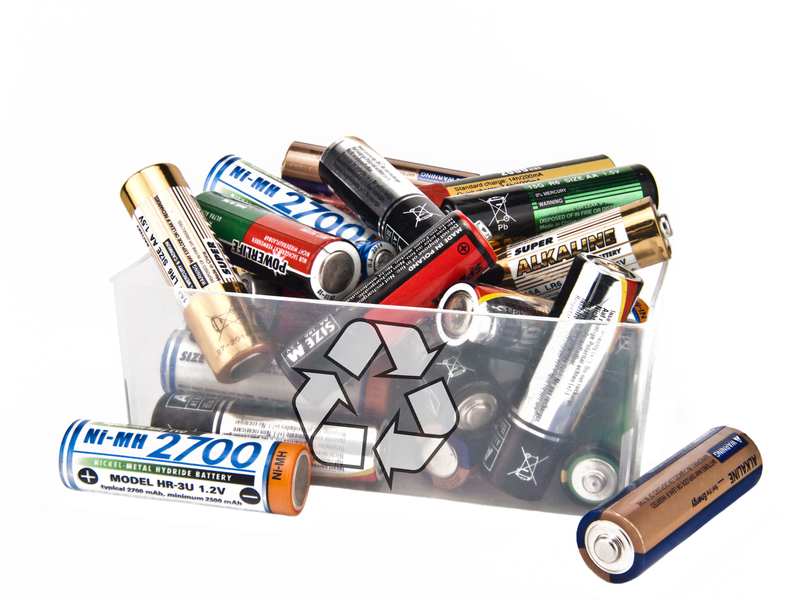Turning Used Pots and Pans into Useful Items Through Recycling
With an increasing focus on environmental sustainability and mindful consumption, recycling old cookware has become both a necessity and an opportunity. Many households face the question: what should be done with those worn-out pots and pans gathering dust in cabinets? Rather than sending them off to landfills, consider how repurposing and recycling used pots and pans can help the environment while offering creative, functional, and eye-catching solutions for your home or community.

Why Should We Recycle Old Cookware?
Modern cookware is designed to withstand years of use, but eventually, non-stick coatings scrape off, handles break, or the pans warp. Disposing of old pans with regular trash contributes to overflowing landfills and needless waste of valuable materials like aluminum, stainless steel, and copper. Recycling and upcycling your old pots and pans helps to recover these resources and reduces the demand for raw materials extraction, thus lowering environmental impact.
Main Environmental Benefits of Recycling Used Cookware
- Reduces landfill waste by diverting metal products from dumpsites.
- Saves energy and resources since recycling metals consumes less energy compared to mining and processing new materials.
- Cuts down pollution caused by extraction and manufacturing processes.
- Conserves biodiversity by minimizing habitat destruction related to resource extraction.
What Materials Are Found in Pots and Pans?
Before recycling or repurposing, it's important to identify what your cookware is made from. Most pots and pans are crafted from metals such as:
- Aluminum: Lightweight, good conductor of heat, common in many kitchenware products.
- Stainless Steel: Rust-resistant, durable, popular for both professional and home use.
- Copper: Excellent heat conductor, often lined with tin or stainless steel.
- Cast Iron: Heavy-duty, long-lasting but susceptible to rust.
- Nonstick coatings (like Teflon): These can sometimes make recycling more complex, as some facilities will not accept them.
If your cookware has plastic or wooden handles, they may need to be removed prior to recycling or upcycling since most facilities accept only metal components.
How to Prepare Pots and Pans for Recycling
Steps for Getting Your Old Cookware Ready:
- Clean Thoroughly: Wash and scrub your pots and pans to remove any residual food or grease. This ensures the materials are uncontaminated for processing.
- Remove Non-Metal Parts: Detach handles, glass lids, or knobs made from plastic, wood, or rubber. If not easily removable, check with your local recycling center for specific instructions.
- Check Recycling Symbols: Some cookware comes with labels indicating the type of metal, which helps determine the appropriate recycling route.
Finding a Metal Recycling Center
Not all curbside programs accept cookware. For best results:
- Contact local recycling facilities and ask if they accept scrap metal, including pots and pans.
- Locate scrap metal buyers, who often collect household metal objects for recycling.
- Explore community recycling events or drop-off points, which periodically accept metal goods.
Creative Ways to Repurpose Old Pots and Pans
If recycling isn't the most easily accessible option, there's still plenty you can do with used cookware at home. Here are some unique and practical ideas for making new items out of old pans and pots:
1. Transform into Garden Planters
Embrace the rustic charm! Old saucepans, skillets, and Dutch ovens make quirky yet robust planters.
- Drill drainage holes in the base (be sure to wear safety goggles).
- Paint or decorate to suit your outdoor aesthetic.
- Arrange in clusters for a whimsical, upcycled garden display.
2. Wall Art and Decorative Pieces
With a bit of imagination, worn cookware can become wall clocks, artistic mirrors, or statement pieces.
- Paint or stencil pans for a vibrant art piece.
- Insert a clock mechanism in the center for a kitchen-themed clock.
- Mount lids and handles for an eclectic sculptural display.
3. Bird Feeders and Bird Baths
Invite wildlife into your backyard by reusing pans:
- Fill shallow pans with water for a rustic bird bath.
- Suspend saucepans from tree branches, filling with birdseed for an instant feeder.
- Add paint for color and weatherproofing.
4. Organizers and Storage Solutions
Repurpose frying pans, muffin tins, or saucepans to organize your home in style.
- Fix muffin tins on a wall for craft or office supply storage.
- Use pans as drawers organizers for jewelry, tools, or small gadgets.
- Mount large skillets on walls as unique shelves.
5. Candle Holders and Lanterns
With sturdy bases and heat resistance, old cookware is perfect for creative lighting projects.
- Turn small pans into candle trays or centerpiece holders.
- Create outdoor lanterns by cutting decorative patterns into metal sides.
- Line with stones, sand, or moss for natural ambience.
6. Upcycled Musical Instruments
Pots and pans yield great sound. Create homemade drums or percussion instruments for children or even community events.
- Hang various sizes for a pot-and-pan drum set.
- Decorate with paint or stickers for a playful touch.
Donation: Give Your Cookware a Second Life
If your pots and pans are still usable but no longer needed, consider donating them:
- Charitable organizations and shelters often appreciate functional cookware.
- Schools, community centers, or theater groups may use them for kitchen classes or props.
- Online community groups (like Freecycle or Facebook Marketplace) connect unwanted items with those who need them, reducing waste even further.
Recycling and Upcycling: What Can't Be Done?
While most metal pots and pans can be recycled, there are exceptions. Some coatings--particularly nonstick (PTFE/Teflon) or enamel--pose problems for metal recyclers. Always call your local recycling program before dropping off cookware, as some facilities decline items with coatings or certain handle materials.
Glass lids, plastic handles, and completely non-metal utensils generally are not accepted with scrap metal recycling and must be separated. If you can't recycle or upcycle certain items, check for specialized recycling initiatives or creative uses, like classroom projects or art studios.
How Manufacturers Are Promoting Sustainable Cookware
In response to demand for greener kitchen products, many cookware brands have begun:
- Designing products for easy disassembly, making recycling simpler at end-of-life.
- Offering take-back programs for old or broken cookware.
- Using recycled materials in new cookware lines.
- Manufacturing durable, long-lasting pans and pots that reduce overall waste.
Choosing items from such manufacturers helps build a circular economy in the kitchen, where old pans are recycled into new ones, closing the loop on waste and reducing environmental impact.

Frequently Asked Questions about Recycling Old Pots and Pans
-
Q: Can nonstick pans be recycled?
A: Most recycling facilities will not accept nonstick pans due to their PTFE coating. However, some specialized scrap metal centers have processes for stripping the coating. Always call ahead! -
Q: What about cast iron cookware?
A: Yes! Cast iron is highly recyclable. Many scrap yards value it for its heavy weight and purity. -
Q: Can I recycle pans with plastic or wooden handles?
A: You typically need to remove the handles before recycling. The metal body is recyclable, but the non-metal parts usually are not. -
Q: Are there commercial recycling programs for old cookware?
A: Some major brands and retailers have take-back or trade-in programs. Search online for cookware recycling in your area or contact the manufacturer directly. -
Q: Is upcycling better than recycling?
A: Both have environmental merit. Upcycling gives items a direct new life, often using less energy than remanufacturing, while recycling ensures raw materials return to production cycles. -
Q: What if I can't find a recycler?
A: Consider donating, trading, or finding creative reuse projects at home or in your community.
Conclusion: Make a Positive Change by Recycling Your Old Pots and Pans
The fate of your used pots and pans doesn't have to be landfill obscurity. By recycling, donating, or repurposing, you make a significant difference for the environment and can also discover new forms of creativity and utility at home. From charming planters to unique art, and from community donations to responsible metal recycling, there are countless ways to ensure old cookware is transformed into useful items.
As more people adopt sustainable habits, even small choices like properly disposing of kitchenware have the power to inspire global change. Next time your cookware reaches the end of its cooking life, remember the value it brings--not just in the kitchen, but in the world beyond it.
